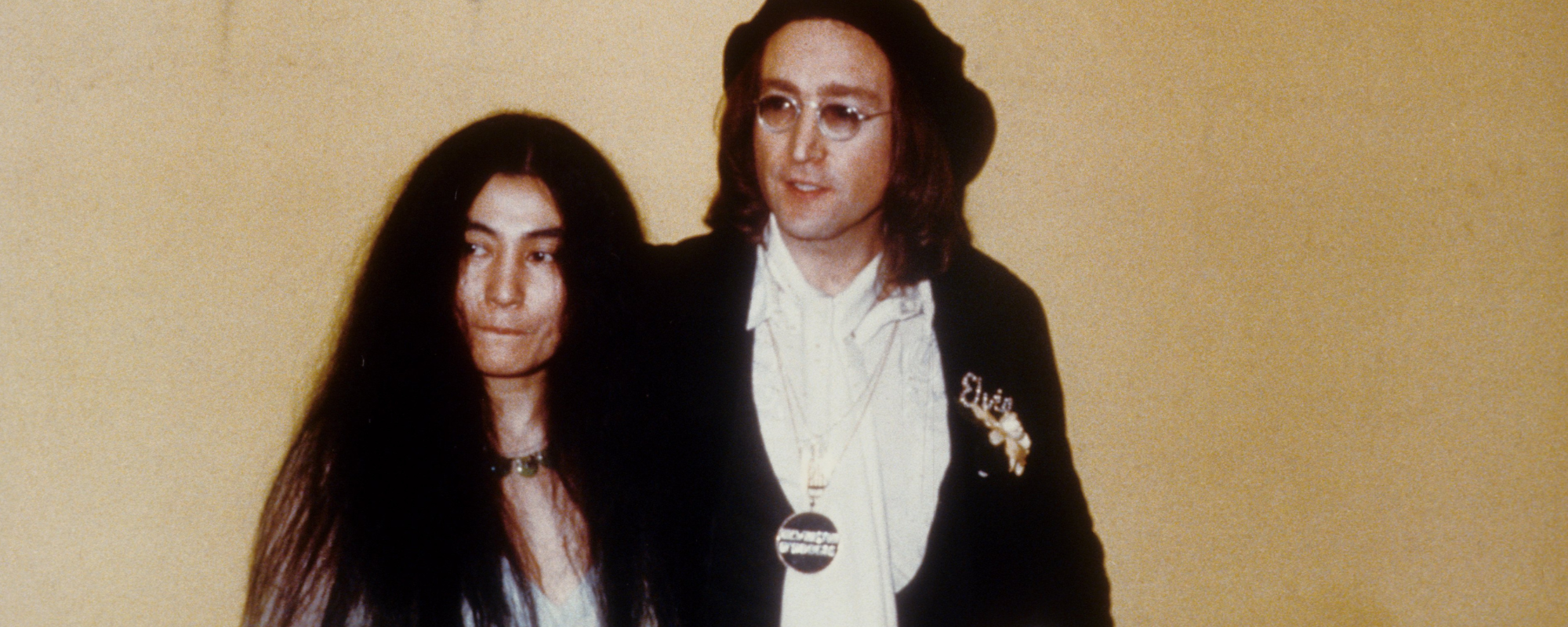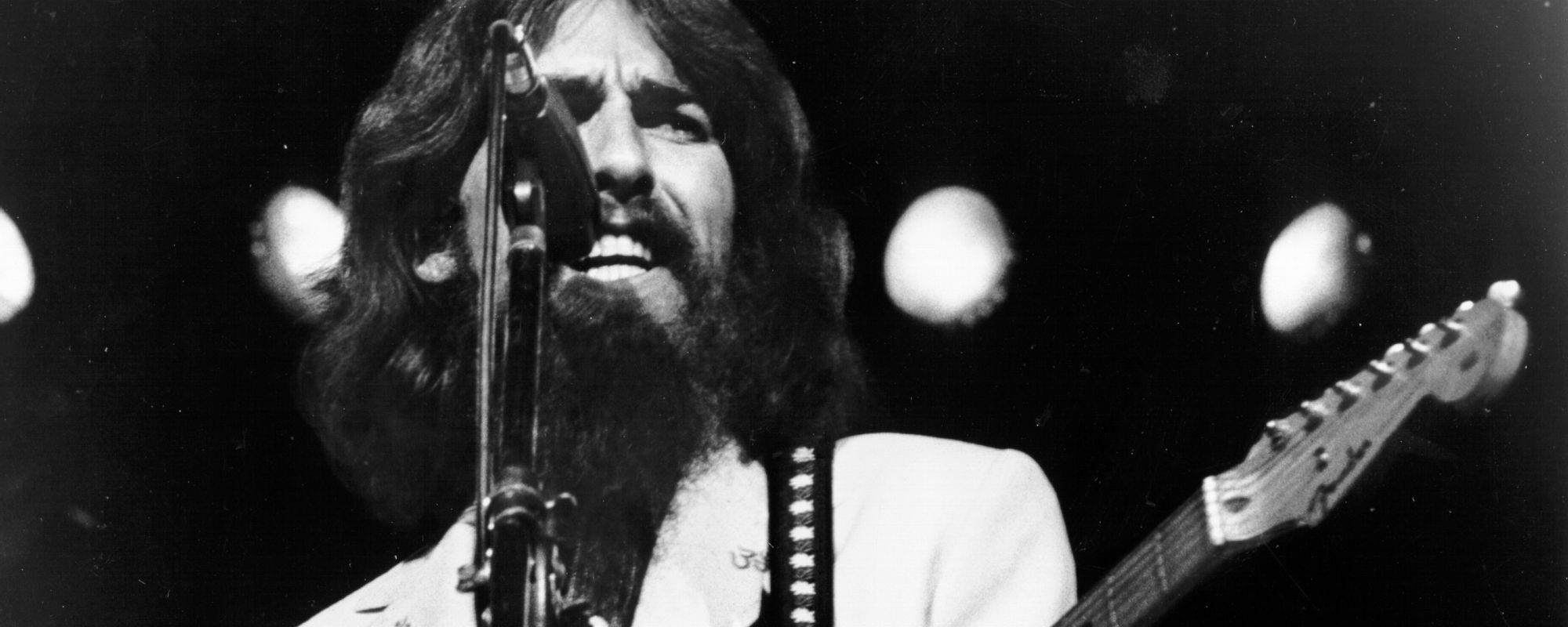The neon decade was an interesting time for American rock bands. Amidst exploding consumerism and abundance, the 1980s were also defined by bubbling countercultural movements.
Videos by American Songwriter
One band on this list began in a thrash metal subculture before selling out stadiums. Another, a semi-folk band with mumbling lyrics, would eventually sell 90 million albums.
How about a band losing their singer at the height of their career? No problem.
Is it possible to release one great album and still be considered one of the greatest rock bands in history? (Spoiler: Yes.)
Behold, four of the best ’80s American rock bands.
Van Halen
Van Halen opened the ’80s with “And the Cradle Will Rock,” but Eddie Van Halen had already reinvented how to play the guitar two years earlier with “Eruption.” Then, the greatest rock guitar player on the planet wrote the group’s biggest hit on a keyboard.
At the height of the band’s success, singer David Lee Roth was out. Sammy Hagar replaced him, and Eddie continued to dabble in new wave with “Why Can’t This Be Love.” But Roth’s ’80s standards like “Panama,” “Hot for Teacher,” and “Unchained” had already made them legends.
Sammy vs. Dave debates rage among Van Halen fans, but what’s most impressive is how the band survived changing singers. To close the decade, they released two No. 1 albums with Hagar: 5150 and OU812. Meanwhile, Van Halen had solidified into a kind of rock and roll institution.
Metallica
Metallica emerged from the San Francisco Bay Area metal scene with much more than speed and volume. James Hetfield had complex and catchy riffs, but he could also sing—Hetfield can downright croon. And it’s the beauty-and-the-beast melodies and Wagner-like arrangements that set Metallica apart. Their epic “Master of Puppets” is dark and gorgeous, and the song’s complexity mirrors the messiness of being human.
Hetfield’s creative partner and antagonist is Lars Ulrich. No one on the planet plays like Ulrich, whose unique drumming style is crucial to the band’s intricacy. And lead guitarist Kirk Hammett punctuates the songs with blasts of metal and blues, usually played through a wah pedal.
In 1986, while touring in support of their landmark album Master of Puppets, bassist Cliff Burton was killed when the band’s tour bus crashed in Sweden. Burton’s writing and arranging talent had helped Metallica evolve beyond their thrash metal roots.
Still, they survived and released …And Justice for All in 1988. When Metallica finally appeared on MTV, it was with “One,” a seven-and-a-half-minute dirge-turns-thrash song about a soldier without limbs begging to die. Remember, this is during the video era of Mötley Crüe and Poison.
Metallica became the world’s greatest metal band. Soon, they’d become the biggest rock band in the world.
Guns N’ Roses
Though Guns N’ Roses arrived later in the decade, their dangerous, raunchy, maniacal debut Appetite for Destruction is one of rock’s greatest first albums.
Slash’s introduction to “Welcome to the Jungle” announced a tectonic moment in ’80s rock. Many bands coming off the Sunset Strip pretended to be guttural. These guys sounded like they were in the gutter. “It’s So Easy” and “Out Ta Get Me” are truly vicious. “Mr. Brownstone” sounds like Hendrix playing with Aerosmith, and then they go full Lynyrd Skynyrd on “Paradise City” with its nostalgic summery hook.
Axl Rose’s tender vocal on “Sweet Child O’ Mine,” confronted with the weight of falling in love, transforms into a “What’s next?” moment. Where do we go, where do we go now? Rose’s mood swing happens after Slash has fired off a scorching solo, moving between snaking harmonic minor and full-on Band of Gypsys blues. Duff McKagan is the punk rock bass player, Izzy Stradlin is like Keith Richards but could have been in The Replacements, and Steven Adler’s off-kilter drumming keeps things swinging.
If Guns N’ Roses had stopped after Appetite for Destruction, they’d still be on the list.
R.E.M.
R.E.M. stood apart from most of what was happening during the 1980s. The Athens, Georgia, bands were relatively imageless. Guitarist Peter Buck didn’t play guitar solos, and singer Michael Stipe often mumbled his words to the point of indecipherability.
They blended ’60s jangly pop with post-punk and politically conscious lyrics, slowly bringing underground music to the mainstream with each album. R.E.M.’s 1983 debut Murmur begins with “Radio Free Europe.” Their next album Reckoning features the college radio classic “So. Central Rain.”
They released their fifth album and first masterpiece Document in 1987—their first with longtime producer Scott Litt. Stipe’s lyrics became more audible, and the album featured two R.E.M. outsider anthems, “It’s the End of the World as We Know It (And I Feel Fine)” and “The One I Love.”
Stipe, Buck, bassist Mike Mills, and drummer Bill Berry were masters at being powerful without being loud. Stipe, always searching for moral gravity, was also funny. For “Stand,” he glimpsed his childhood and the music of The Archies, The Banana Splits, and The Monkees. Written with irony, nonetheless, the song became a hit. “Stand” was the second single from Green (1988), which also featured the power-pop masterwork “Orange Crush.”
The culture changed as the ’90s arrived, and the alternative rock bands played on college radio soon dominated the mainstream. R.E.M. was a driving force behind the movement. By the end of the ’80s, their biggest albums were still ahead of them.
When you purchase through links on our site, we may earn an affiliate commission.
Photo by Rick Diamond/WireImage for Georgia Department of Economic Development












Leave a Reply
Only members can comment. Become a member. Already a member? Log in.